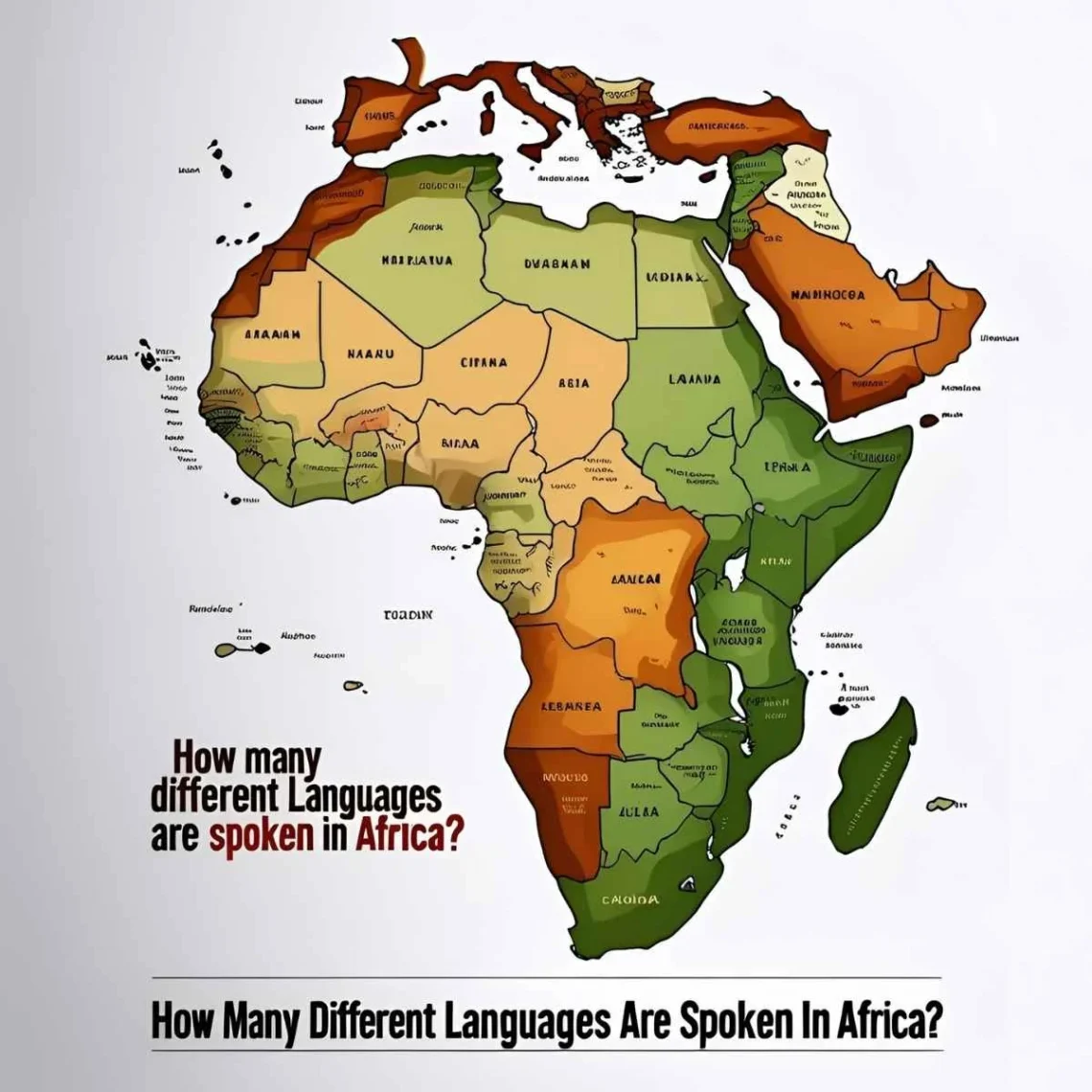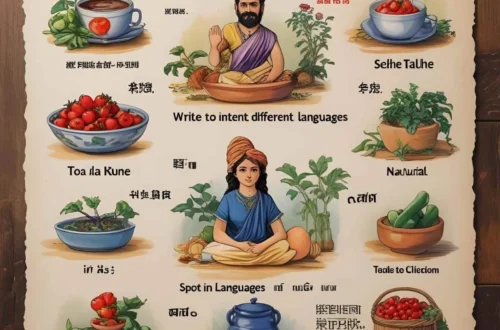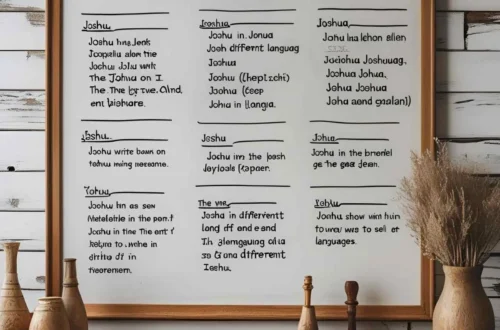Picture a bustling market in Lagos, where vendors switch seamlessly between Yoruba, English, and Pidgin to haggle with customers. This vibrant scene captures Africa’s linguistic richness, where thousands of languages weave a tapestry of human connection.
From the rhythmic clicks of Xhosa in South Africa to the melodic tones of Amharic in Ethiopia, Africa’s languages reflect its diverse cultures and histories. Experts estimate over 2,000 languages are spoken across the continent, a testament to its unparalleled diversity.
Let’s embark on a journey to explore the number of languages spoken in Africa and what this diversity reveals about its people.
Reference Table: Major Language Families and Examples in Africa
| Language Family | Example Languages | Cultural/Linguistic Insight |
|---|---|---|
| Niger-Congo | Swahili, Yoruba, Zulu | Largest family, spoken across sub-Saharan Africa, known for tonal systems. |
| Afroasiatic | Amharic, Hausa, Arabic | Common in North and East Africa, often tied to trade and religion. |
| Nilo-Saharan | Dinka, Kanuri, Luo | Spoken in Central and East Africa, known for complex verb systems. |
| Khoisan | !Xóõ, Nama, Sandawe | Features click consonants, used by indigenous groups in Southern Africa. |
| Austronesian | Malagasy | Spoken in Madagascar, reflecting Indian Ocean migration. |
| Indo-European | English, Afrikaans | Colonial legacy languages, used widely in official settings. |
| Bantu (Niger-Congo subgroup) | Shona, Xhosa, Kikuyu | Dominant in Southern and Eastern Africa, with shared linguistic roots. |
| Semitic (Afroasiatic subgroup) | Tigrinya, Oromo | Linked to ancient trade routes and religious texts. |
| Nilotic (Nilo-Saharan subgroup) | Maasai, Nuer | Spoken by pastoralist communities in East Africa. |
| Cushitic (Afroasiatic subgroup) | Somali, Afar | Common in the Horn of Africa, with pastoralist ties. |
| Chadic (Afroasiatic subgroup) | Hausa, Fulfulde | Widely spoken in Northern Nigeria and Niger, tied to trade. |
| Khoe (Khoisan subgroup) | Nama, !Kung | Endangered languages with unique phonetic features. |
| Berber (Afroasiatic subgroup) | Tamazight, Kabyle | Spoken in North Africa, tied to indigenous Amazigh identity. |
| Atlantic (Niger-Congo subgroup) | Wolof, Fula | Common in West Africa, linked to coastal trade networks. |
| Mande (Niger-Congo subgroup) | Mandinka, Bambara | Spoken in West Africa, known for oral storytelling traditions. |
European Influence: Colonial Legacy Languages
While Africa is home to thousands of indigenous languages, colonial history introduced European languages like English, French, Portuguese, and Afrikaans. For instance, English is an official language in 24 African countries, including Nigeria and Kenya, used in education and government. Similarly, French is spoken in 21 countries, such as Senegal and Côte d’Ivoire, reflecting France’s colonial past. Portuguese, used in Angola and Mozambique, and Afrikaans in South Africa, add to this mix. These languages, while not indigenous, facilitate cross-cultural communication but sometimes overshadow local tongues, highlighting tensions between global and local identities.
African Language Families: A Diverse Linguistic Landscape
Africa’s linguistic diversity is rooted in its major language families. The Niger-Congo family, covering over 1,500 languages, includes Swahili (spoken in over 15 countries like Kenya and Tanzania) and Yoruba (Nigeria). These languages often use tones to convey meaning, shaping vibrant oral traditions. Meanwhile, Afroasiatic languages like Amharic (Ethiopia) and Hausa (Nigeria, spoken in over 20 countries) are tied to trade and Islamic heritage. Additionally, Nilo-Saharan languages, such as Dinka (South Sudan), are spoken in Central and East Africa, known for complex grammar. The Khoisan family, with fewer than 30 languages like !Xóõ, features unique click sounds, primarily in Southern Africa. Finally, Austronesian’s Malagasy in Madagascar reflects ancient migrations. With over 2,000 languages across 54 countries, Africa’s linguistic diversity is unmatched, reflecting its cultural richness.
Indigenous & Endangered Languages: Preserving Heritage
Africa’s indigenous languages, particularly those with smaller speaker populations, face endangerment. For example, Khoisan languages like Nama (Namibia) and Sandawe (Tanzania) are spoken by fewer than 10,000 people each, threatened by dominant languages like English. Similarly, Hadza in Tanzania, with under 1,000 speakers, risks extinction. In contrast, languages like Berber (Tamazight, spoken in Morocco and Algeria) are seeing revival efforts. These languages, often tied to oral traditions and indigenous identities, carry unique cultural knowledge. Preservation initiatives, like community schools and digital archives, aim to protect this heritage across over 20 countries, ensuring Africa’s linguistic mosaic endures.
Cultural Insights: The Evolution of Africa’s Languages
Africa’s languages have evolved through trade, migration, and colonization. For instance, Swahili emerged as a trade language along EastJon the East African coast, blending Bantu and Arabic influences. Similarly, Hausa developed through trade networks in Northern Nigeria. Colonial languages like English and French spread through 19th-century European rule, shaping modern education systems. Moreover, ancient migrations brought Malagasy to Madagascar, reflecting Austronesian roots. These languages carry histories of cultural exchange, resilience, and adaptation, with over 2,000 tongues shaping Africa’s diverse identity over centuries.
Proverbs and Sayings: Wisdom in Words
- Swahili: “Heri kuishi kama maskini kuliko kufa kama tajiri.” (Better to live as a poor man than die as a rich one.) – Reflects humility and survival.
- Yoruba: “Ohun ti oju ri ni oju n je.” (What the eye sees, the eye eats.) – Emphasizes the power of observation.
- Hausa: “Kowa ya ji yadda rana ta ke ji.” (Everyone feels the heat of the sun.) – Highlights shared human experiences.
- Amharic: “Yäzemer yäzemer yäfät’ral.” (A singer creates a song.) – Celebrates creativity in language.
- Zulu: “Inhliziyo yami iyakhuluma.” (My heart speaks.) – Ties language to emotion and truth.
FAQs
How many languages are spoken in Africa?
Estimates suggest over 2,000 languages across 54 countries, grouped into families like Niger-Congo and Afroasiatic.
Why are there so many languages in Africa?
Africa’s diversity stems from ancient migrations, trade, and cultural isolation, fostering unique linguistic traditions.
Are African languages at risk of disappearing?
Yes, smaller languages like Khoisan face endangerment, but revival efforts are helping preserve them.
Conclusion
From Swahili’s trade-born rhythms to the ancient clicks of Khoisan, Africa’s over 2,000 languages paint a vibrant portrait of its people and history. Each tongue, whether spoken by millions or a few, carries stories of resilience and connection. Consequently, this linguistic diversity reminds us of the power of words to unite and define cultures. What languages have you encountered in Africa or its diaspora, and how have they shaped your view? Share your experiences below—we’re eager to hear your story!






